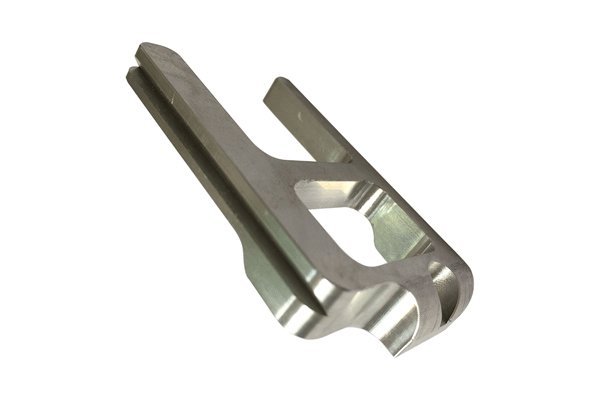Did you know that plastics can maintain impressive structural integrity and performance even in extreme low temperatures? In fact, materials like polycarbonate and certain engineering plastics can operate effectively at -40 degrees Celsius! As industries push the boundaries of innovation, understanding the low temperature performance of materials in CNC machining becomes critical. How do plastic CNC machining processes stack up against metal machining, particularly in low-temperature environments? In this blog, we’ll explore the fascinating world of CNC machining, focusing on the performance of plastic versus metal materials in low-temperature settings.
Understanding CNC Machining
CNC (Computer Numerical Control) machining is a manufacturing process that utilizes computer-controlled tools to create precise parts and components. This technology has transformed the way we produce goods, allowing for a level of accuracy and speed that offers significant advantages over traditional machining.
In CNC machining, various materials can be utilized, from metals like aluminum, brass, and stainless steel to a wide range of plastics, including polycarbonate, acrylic, and nylon. Each material presents unique characteristics and behavior under different conditions.
The Basics of Low-Temperature Performance
Low-temperature performance refers to how a material behaves when subjected to colder environments. Factors such as strength, durability, brittleness, and flexibility come into play. Understanding these properties is essential for industries that operate in challenging conditions, such as aerospace, automotive, and cryogenic applications.
The Impact of Temperature on Material Properties
Temperature significantly influences material properties. When the temperature drops, certain materials may experience hardening, become brittle, or lose ductility. For metals, factors like yield strength and tensile strength often change at lower temperatures, presenting unique challenges. On the other hand, some plastics demonstrate resilience, maintaining excellent flexibility and performance even in extreme cold.
The Performance of Plastic CNC Machining at Low Temperatures
Key Characteristics of Plastics
Plastics, particularly engineering plastics, exhibit advantageous traits in low-temperature applications. Some key characteristics include:
Specific Examples of Low-Temperature Plastic Performance
CNC Machining of Plastic
CNC machining of plastics involves several processes like milling, turning, and laser cutting. The key to successful machining lies in the selection of the right type of plastic and optimizing the machining parameters (tool speed, feed rate, and cooling).
Key Machining Considerations for Low Temperatures
The Performance of Metal CNC Machining at Low Temperatures
Key Characteristics of Metals
Metals have a different response to low temperatures than plastics. While they may exhibit high strength and durability, their properties can also lead to challenges in machining.
Specific Examples of Low-Temperature Metal Performance
CNC Machining of Metals
CNC machining of metals requires attention to detail and rigorous planning to meet the challenges posed by low temperatures.

Key Machining Considerations for Low Temperatures
Comparing Plastic and Metal CNC Machining
Strength & Durability
When it comes to comparing the strength and durability of plastic versus metal machining in low-temperature conditions, metals often hold the upper hand in terms of absolute strength. However, the flexibility and resilience of certain plastics can make them viable alternatives, especially where weight and brittleness are concerns.
Cost Effectiveness
Plastics are generally more cost-effective for low-volume production runs due to lower raw material costs and ease of machining. Metals, while often offering higher durability, may drive up costs due to increased wear on tools and the need for heavier machinery.
Application Suitability
The choice between plastic and metal largely depends on the application requirements.
Real-World Applications
Understanding the nuances of plastics and metals in low temperature performance leads to significant advantages when determining material selection for specific applications.
Aerospace Industry
The aerospace industry is continually seeking materials that can withstand extreme temperatures, especially as it relates to the outer skin of aircraft and satellite components. Employing plastics such as polyphenylene sulfide (PPS) can provide low-weight solutions that withstand the cold without compromising structural integrity.
Automotive Sector
The automotive sector also benefits from using plastics in low-temperature environments for components like dashboard panels and protective covers. In contrast, the metal components (like frame rails) need to be meticulously machined for maximum strength and durability.
Cryogenic Sensors
In cryogenic applications, materials must operate effectively at extremely low temperatures, with certain high-performance plastics being used in sensor housings due to their excellent properties at both ambient and cryogenic temperatures.
Challenges of CNC Machining in Low Temperatures
Regardless of whether machining is done with plastic or metal, challenges abound, particularly when temperatures drop.
Equipment Limitations
Machining at colder temperatures may demand specialized equipment, as extreme conditions can impact tool life and performance.
Material Behavior
Understanding how each material reacts to low temperatures is vital for preventing challenges in the production cycle.
Supplier Considerations
Finding suppliers that understand low-temperature capabilities and material behaviors is crucial for ensuring quality in final products.
Choosing between plastic and metal CNC machining in low-temperature applications requires a comprehensive understanding of material properties, machining techniques, and application-specific demands.
Summary of Techniques Covered
Why This Matters
As industries continue to innovate and face new challenges in extreme environments, understanding how materials behave in CNC machining is paramount for delivering high-quality, efficient solutions. By valuing the insights shared in this blog, you will be better positioned to make informed decisions that impact your operations, product quality, and ultimately, your bottom line. Recognizing the distinct advantages and challenges posed by both plastics and metals opens the door to myriad possibilities in manufacturing.






